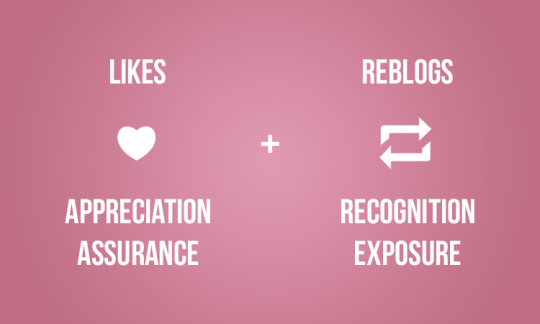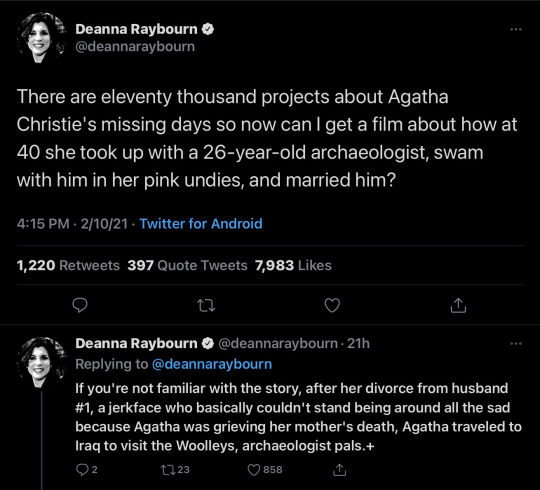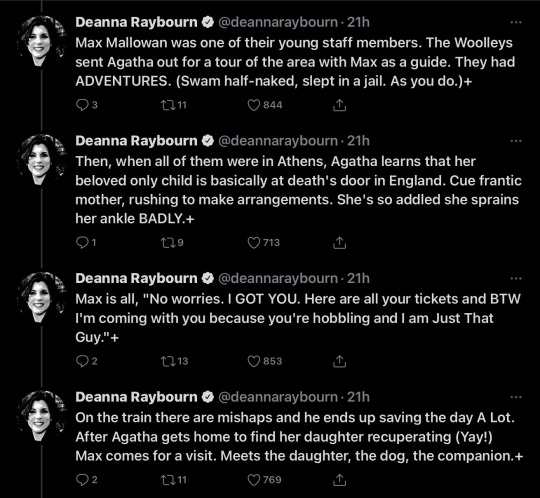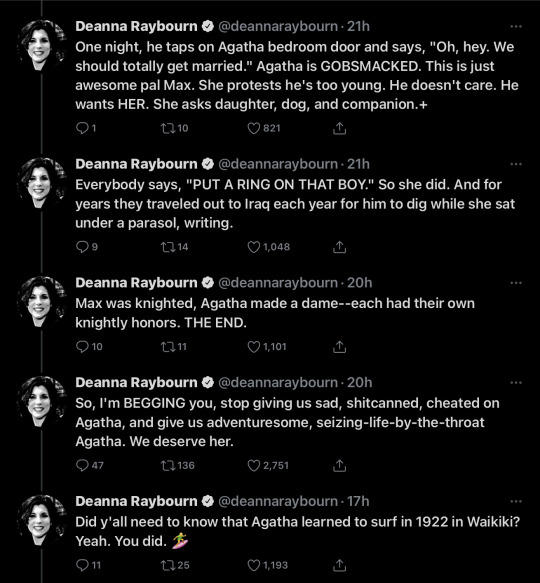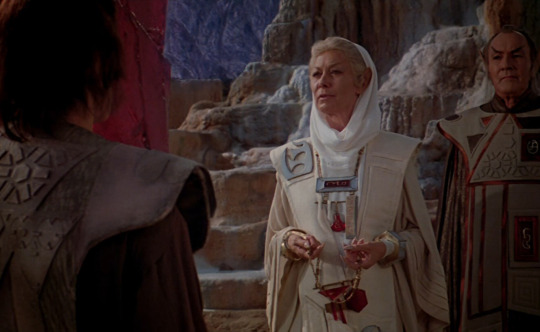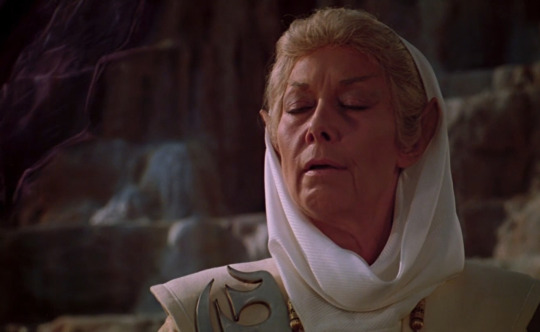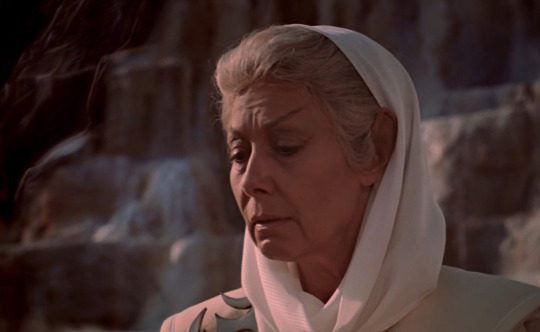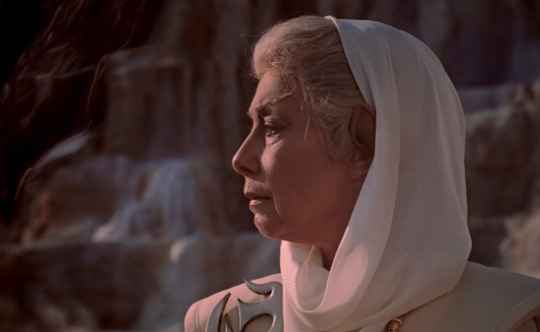acd canon holmes, chock full of sentiment, original work that you will love coming soon
Don't wanna be here? Send us removal request.
Text

So I decided to read the actual study (link) - it's totally free. TL;DR: the study is testing how well people in the 21st century can understand the specific nuances of 19th century London. This is not "reading comprehension", they are testing whether you know things like what a "Michaelmas Term" (Wikipedia) is. This is... to put it politely, not a normal part of reading comprehension in any sort of day to day task. This study is exclusively about your ability to read and be familiar with the nuances of 19th century English Literature as a specific body.
The study structure was 20 minutes to read aloud seven paragraphs. So, while one was allowed a quick Google or a peek at the dictionary, there isn't really time to do any sort of deep dive - this is a test of whether you are already familiar with this sort of work.
---
Oh, but it wasn't just 20 minutes to read it out loud: every few sentences, the facilitator would poke the subject to explain the last few sentences. Not summarize, no: they wanted a full dissection. "Dickens is setting the atmosphere by describing the fog" was considered a failure of comprehension. The only explanation they provide that counts as a "pass" is almost twice as long as the actual passage itself!
It's not even really clear if they made it clear to the subjects that they were looking for this sort of verbose summary - the facilitator just replies "O.K." regardless of how detailed their response is.
I cannot imagine I would do terribly better, given 20 minutes to read aloud 7 paragraphs, and being constantly prodded to regurgitate the material at random intervals!
---
I really do NOT consider it worth reading, but here's a link to the original post for posterity's sake: https://www.tumblr.com/prettyboysdontlookatexplosions/783379386552516608?source=share
3K notes
·
View notes
Text
Build a man a fire and he'll be warm for a night. Set a man on fire and he'll be warm for the rest of his life.
Give a man a leaf and he will eat it. Teach a man to leaf and he will go away
47K notes
·
View notes
Note
Incredible and specific discussion of why reading in your genre is important, holy cow.
Re: Star Wars, the addition is super super on point. Yes, Lucas loved his westerns and samurai films and ww2 flying ace films but he also put that Joseph Campbell hero's journey juice in there. He hero's journeyed before hero's journeying was a thing. He had a whole extra level of glue to make the numerous genres he was pulling on resonate and sing. This was a deliberate collaboration between Lucas and Campbell, and adds a coherent meta structure on top of the story beats and ensures that the characters align with significant archetypes. The later Star Wars movies aren't tapping in on that level, crustiest reformatted ocr PDF indeed!
(Sidebar I think hero's journey can be helpful structurally but like, too many people adopt the shitty superficial version you can get from numerous writer's craft vids, articles, and courses, and don't tap into the intention of Campbell's work. It's well worth the time to read Hero With a Thousand Faces and Kim Hudson's The Virgin's Promise. Go deep or go home.)
How did you get so good at writing??? Did you take classes? I feel like you should get paid all the money for this! (I subscribe to your website!)
after i dropped out of high school i found a torrent of like 5GB of OCRd romance novels and i read like 3 romance novels a day for a while
read enough romance novels and you will realize that they live or die entirely on technical skill. if you are new to romance novels then even bad ones can dazzle you with novelty but by the time you are on your 30th historical fake engagement between a bluestocking and a rakish duke you can grade them and you know when they've failed. when two books have what should be the same main characters hitting the same plot beats, but one of those books is delightful and the other fucking sucks, you learn some things. some books are bad and still delightful. other books are good but they just don't hit. you start to see the seams in the bad ones. 'oh, this is a weird out of character moment because she wanted to have the kabedon moment and didn't know how to get there'. 'she didn't want the ust to end but couldn't think of a better reason than this deus ex cockblock.' that kind of thing.
you could probably do this with other genres but i like romance because the plot is two people fall in love. that's it. everything else is set dressing. if you can figure out how to make that work you can carry it over into whatever other genre you feel like. mysteries would give you a different skillset around plotting that i don't have.
anyway after that i wrote a lot.
8K notes
·
View notes
Text
For REAL I barely go here anymore but if Mary wasn't supposed to be Moriarty then she should have been Moran (hello???? sharpshooter at the pool??? She shot Sherlock?????). The show collapsed around what they did with her. She was a villain until she wasn't. She would have been great as a villain all the way.
I need to see more Sherlock posts from people who don't like Mary😔
Like I'm so sorry but I don't like her. There's nothing you can say that will change my mind because trust me I've tried to find anything to love her more than hate her but I can't
#it became a weird fanfic in who took whose side in the Amanda/Martin breakup#^^^^^ this comment hahaha prev
158 notes
·
View notes
Text
"Federal, territorial and Indigenous leaders gathered in Yellowknife this morning [July 21, 2025] to launch a landmark Indigenous-led conservation agreement that will protect nearly 380,000 square kilometres of land and water.
Following a prayer song by the Yellowknife Dene Drummers, Chief Ernest Betsina of the Yellowknives Dene First Nation opened the event, saying, “This document we signed today has been a long time in the making. It reflects years of collaboration and commitment from Indigenous leaders across the North. It reflects our shared understanding that Indigenous people have always been the stewards of the land. And it’s time for that responsibility to be recognized and supported.”
The agreement, known as NWT: Our Land for the Future, is a partnership between the federal government, territorial government and 21 Indigenous governments across the Northwest Territories. It covers existing protected areas, which will share in the long-term funding, and around 200,000 square kilometres of new protected and conserved areas — forming a region roughly twice the size of Florida.
In addition to the $300 million in federal funding, the agreement also includes $75 million from philanthropic partners. In the next several months, the NWT: Our Land for the Future Trust will begin to distribute funds to Indigenous governments in the territory, to support activities such as conservation and stewardship, protected and conserved areas, Guardian programs, ecotourism and more.
Echoing statements from several chiefs, territorial Minister of Environment and Climate Change Jay MacDonald said, “This agreement represents a generational investment. It will provide opportunities to support Indigenous-led stewardship, while offering real, meaningful and new opportunities to Northerners, particularly in the small communities. We are seeing a shift toward a conservation economy that puts people, community and cultural values at the centre of decision-making.”
Minister of Environment and Climate Change Canada Julie Dabrusin echoed that sentiment. “This isn’t just a conservation announcement — it’s really a global milestone. Our Land for the Future is one of the largest Indigenous-led conservation efforts in the world. The areas that it is going to help to conserve is almost seven times the size of Nova Scotia,” she said, adding that represents more than two per cent of Canada’s land-mass.
Last November, the landmark agreement was signed in Behchokǫ̀, NWT, by leaders of Indigenous governments and organizations from across the territory at a celebration that also involved jigging, drum dancing and a fire-feeding ceremony, drawing community members of all ages.
“This partnership is about investing in our people and taking care of our land,” Danny Gaudet, Ɂek’wahtı̨dǝ́ of the Délı̨nę Got’ınę Government, said in a statement. “It’s about generating jobs that strengthen our cultures and create economic opportunities across the North. We have so much work to do to care for the land, guided by our Elders, our youth, our Guardians. The funds released today will help us honour that responsibility.”
Dahti Tsetso, the deputy director of the Indigenous Leadership Initiative and CEO of NWT: Our Land for the Future Trust, told The Narwhal in November the funds “have so much transformative potential.” In addition to generating hundreds of jobs each year, they can also support cultural and land-based programming, and create opportunities and positive examples for youth. This morning, she celebrated the “incredible milestone that so many people … put in an incredible amount of effort to get to this day.”"
-via The Narwhal, July 21, 2025
794 notes
·
View notes
Text
56K notes
·
View notes
Text
There is a species of butterfly that lives in the mountains.
When it hatches as a caterpillar, it lowers itself to the ground on a strand of silk, and then produces a chemical that smells like the larvae of ants. An ant eventually discovers it, lured by the scent, and brings it back to the anthill, where it is cared for by the colony until it pupates. After a few weeks, the adult butterfly crawls back up through the anthill, through the dirt and the winding tunnels, and out into the sunlight before it can finally open its wings.
Some say that the caterpillar “tricks” the ants into doing this. I don’t know if I agree – I think it’s too small a thing to accuse of guile, don’t you?
With this in mind: Once upon a time, there were seven dwarves.
They lived and worked in the mountains, mining for gold and jewels and precious things. And one night, after a long day’s labour, they heard a knocking at the great stone doors of their mountain.
Outside, shivering and small, they found a human child.
I’m sure you can guess most of what she told them. Stepmothers were involved – it’s not important. What’s important was that each of the dwarves felt a dire and pressing need to care for the child, and they took her into their home, fed her, clothed her, and gave her a warm bed to sleep in. And many seasons passed around that mountain, with the dwarves raising the child as one of their own, until one autumn’s day.
The girl laid, slender and still, in a coffin of spun glass. And some weeks later, one of the dwarves had the idea to call for a prince. This was of course the sensible thing to do, and the prince of a nearby kingdom who listened to the story thought an ensorcelled girl would be a grand thing to rescue.
Poor devils. It feels cruel to judge them. But there were so many questions they could’ve asked – what was this stepmother’s name? Was she real? Did she exist? Who had made the glass coffin? Surely one of them must’ve thought of the question. And why did it grow more opaque with every passing day?
Were they wrong to trust?
I guess it doesn’t matter now.
The moment the prince stepped into the subterranean chamber with the glass coffin, it shivered with a twinkling, plinking noise. Threads of glass exploded into glittering, razor-edged confetti.
A claw split the great glass cocoon.
The thing that spilled out of it, hulking and huge, knew in the fog of its mind, in a base animal sense that screamed, that it was in a room too small for it to fit. It wanted up. It wanted out.
In front of it was some twiggy little thing holding a sword.
It took its first breath.
The flames were the colour of cornflowers.
The dwarves fled. The thing followed close behind, up, up, up through the stone and the winding tunnels, not to chase, not to hunt, but to get up, to get out, out, out–
It struck the great stone doors at a run. They crumbled like gingerbread. And then there was sunlight, and the open sky…
And it could finally open its wings.
Convergent evolution is a hell of a thing.
The dragon, of course, lived happily ever after with its loot of gold and jewels from a hastily abandoned dwarf mine. Being much bigger than a caterpillar, we could accuse it of tricking the dwarves who were kind to it, had taken it in, had fed and clothed and warmed it.
It probably wouldn't mind.
15K notes
·
View notes
Text
8K notes
·
View notes
Text
the purest form of serotonin is when a cat looks at u and u go like “what?” and it meows at u
311K notes
·
View notes
Text
Apparently a lot of people get dialogue punctuation wrong despite having an otherwise solid grasp of grammar, possibly because they’re used to writing essays rather than prose. I don’t wanna be the asshole who complains about writing errors and then doesn’t offer to help, so here are the basics summarized as simply as I could manage on my phone (“dialogue tag” just refers to phrases like “he said,” “she whispered,” “they asked”):
“For most dialogue, use a comma after the sentence and don’t capitalize the next word after the quotation mark,” she said.
“But what if you’re using a question mark rather than a period?” they asked.
“When using a dialogue tag, you never capitalize the word after the quotation mark unless it’s a proper noun!” she snapped.
“When breaking up a single sentence with a dialogue tag,” she said, “use commas.”
“This is a single sentence,” she said. “Now, this is a second stand-alone sentence, so there’s no comma after ‘she said.’”
“There’s no dialogue tag after this sentence, so end it with a period rather than a comma.” She frowned, suddenly concerned that the entire post was as unasked for as it was sanctimonious.
123K notes
·
View notes


